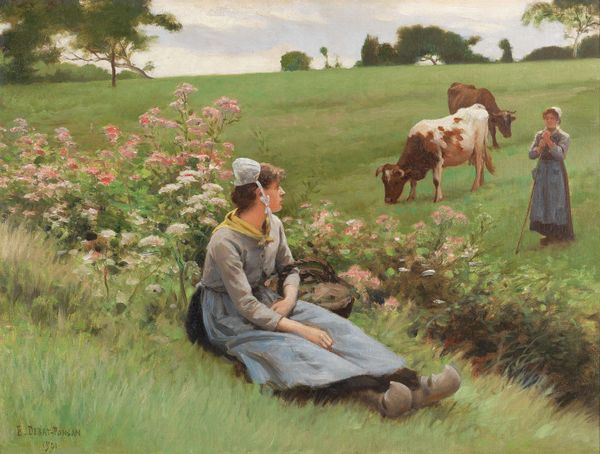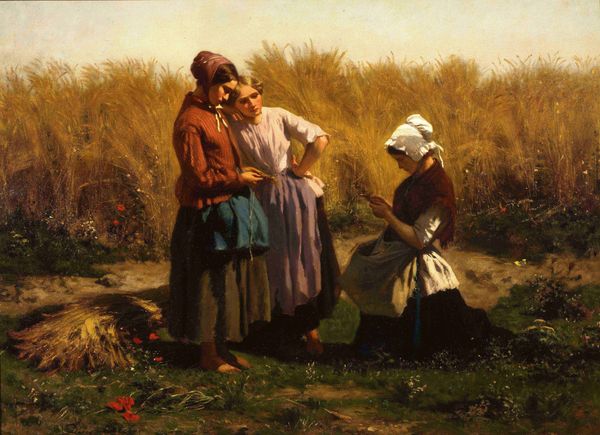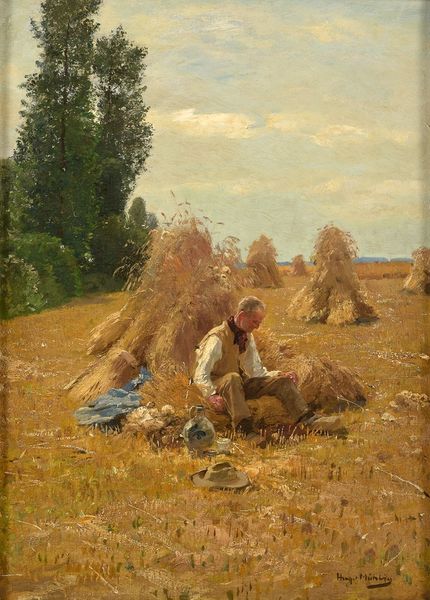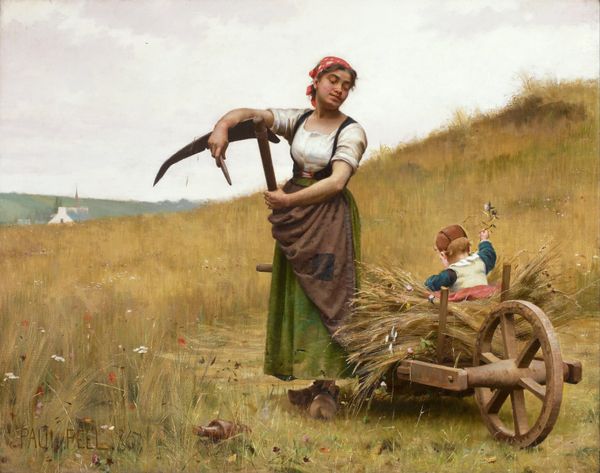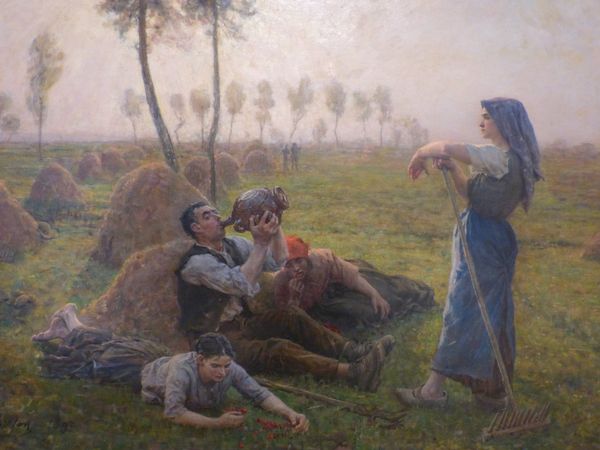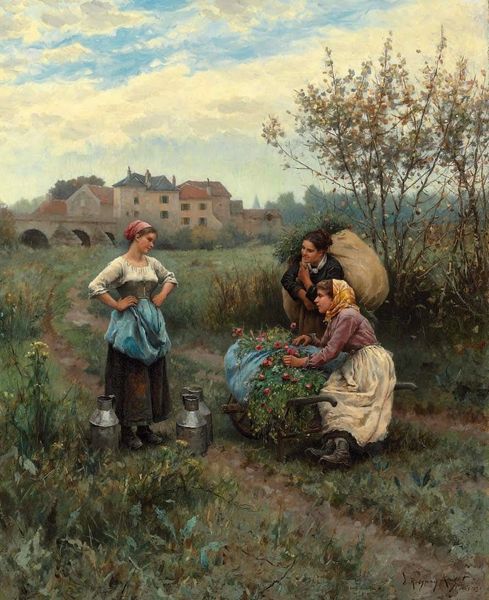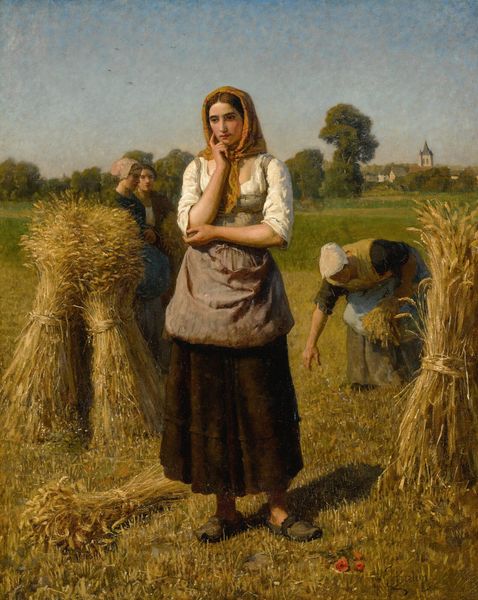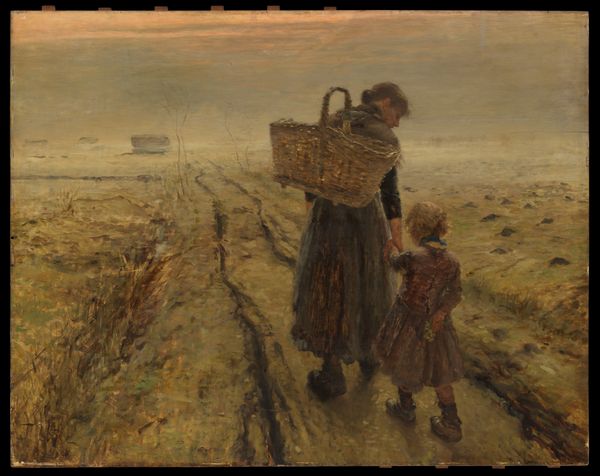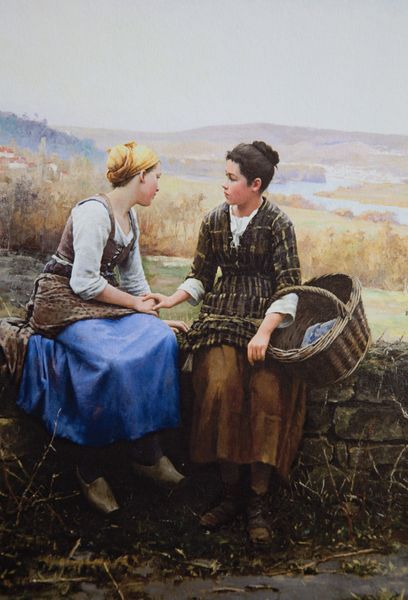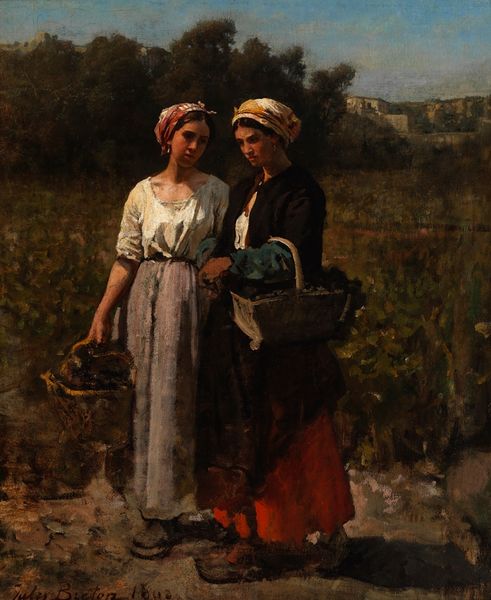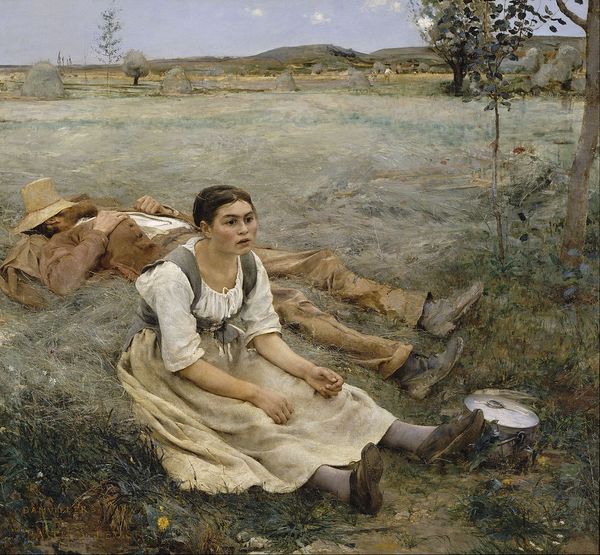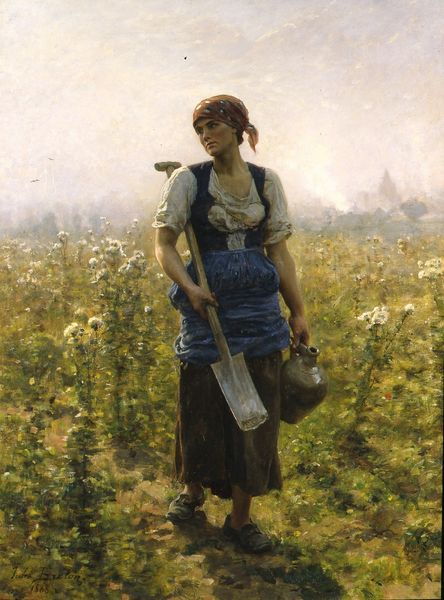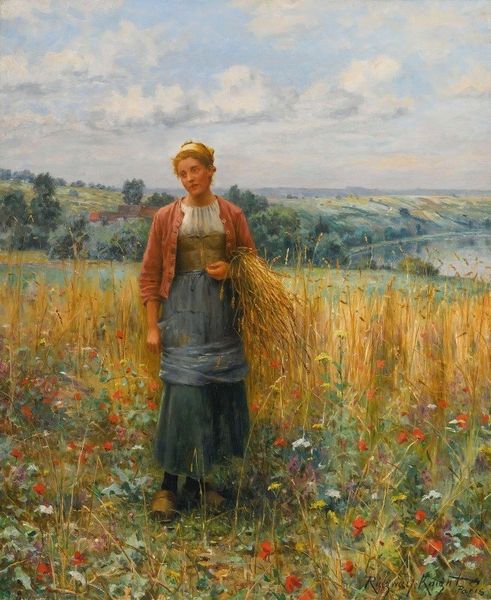
painting, plein-air, oil-paint
#
painting
#
impressionism
#
plein-air
#
oil-paint
#
landscape
#
oil painting
#
genre-painting
#
realism
Copyright: Public domain
Editor: This is "The Meeting" by Daniel Ridgway Knight, painted in 1888. It’s an oil painting showing two young women in a field. I’m really drawn to how grounded and unidealized they seem. What can you tell me about how this fits into art history? Curator: Well, genre painting like this was gaining popularity. Look at how Knight is positioning these women – not as mythological figures or members of the aristocracy, but as everyday rural workers. He is participating in a specific cultural narrative that idealizes rural life and labor. Consider that he painted this for an urban art market, often fueled by nostalgia and social anxieties surrounding industrialization. Do you think it provides an accurate depiction? Editor: I guess I assumed it was more straightforward, just a scene of daily life. The women don’t look particularly glamorous. Curator: Exactly! The lack of glamour is calculated. By depicting these women in a seemingly "natural" state, Knight creates a sense of authenticity and innocence, reflecting the larger social desire of the time to reconnect with simpler, supposedly more virtuous, times, especially as industrialization rapidly changed the landscape of both urban and rural life. Editor: So it's almost staged in a way, presenting an image that urban audiences wanted to see? Curator: Precisely! The very act of representing rural life becomes a political act. He’s not just painting a pretty picture; he's reinforcing a certain set of values about work, nature, and society itself within specific exhibition contexts like the Paris Salon. It prompts a re-evaluation of the kind of narrative presented at large public art exhibitions at that time. Editor: I hadn't considered how the intended audience would affect how a painting like this would be received. I’ll definitely look at similar paintings with this in mind. Curator: It's crucial to recognize art as being inextricably linked to its cultural and historical setting; without these social constructs, we see a very limited representation of history.
Comments
No comments
Be the first to comment and join the conversation on the ultimate creative platform.

